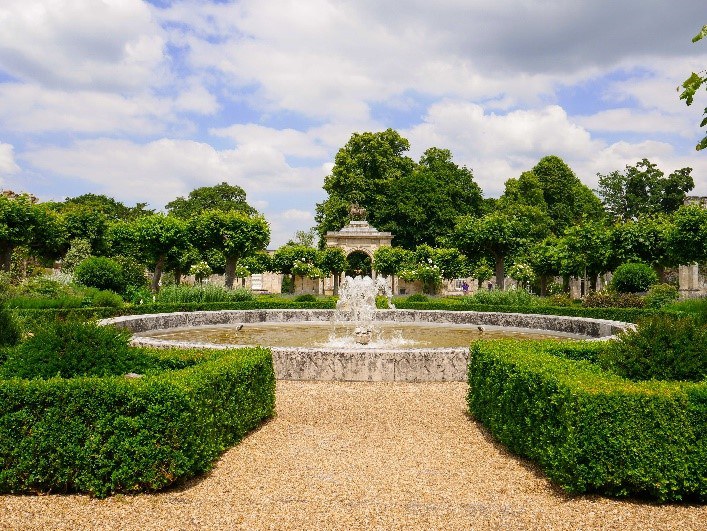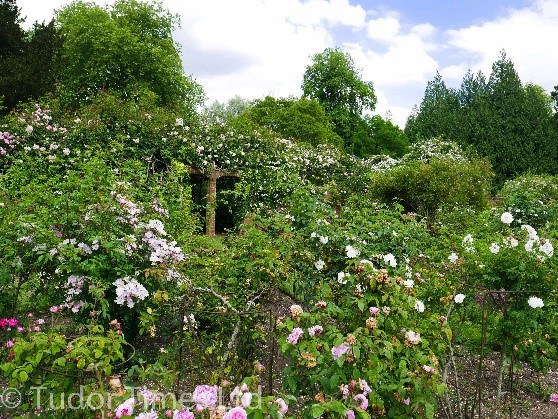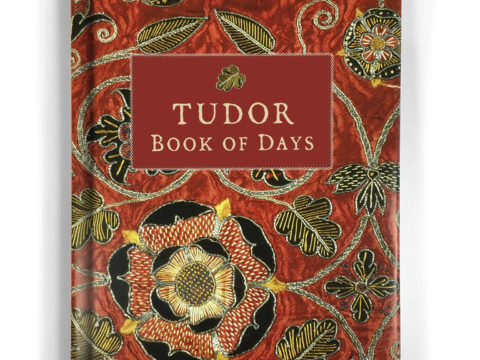Wilton House
The Countess of Pembroke's Arcadia
Chapter 1: Visiting
Wilton itself is an ancient settlement. It is small, but carries an enormous weight of history, having once been the royal seat in the ancient Saxon kingdom of Wessex. Today, there are a few small shops, a pub, and an ice-cream parlour, as well, of course, as the old church and Wilton House.
The entrance to the house is through a grand gate-way, with a broad sweep in front, and the car park to the left. Visitors enter the shop to the left of the gates, where the entrance fee is payable. Members of the Historic Houses Association receive a discount. No photography is permitted indoors. The room attendants were particularly helpful and knowledgeable.
Once through the entrance shop, you turn right to stand in front of the main gates, in an area called the North Forecourt. Here, you receive the full impact of the north front of the house, with the superb formal box-edged garden in front of it. The central block, with its protruding entrance is Elizabethan, the wings to either side have Georgian façades. At one end of the formal garden is the Elizabethan fountain, probably dating from the time of the marriage of the 2nd Earl to Mary Sidney – it has Pembroke wyverns and Sidney porcupines in the decoration. Looking back through the sparkling water sets off the entrance to perfection.

Passing through the front door, you are in the Front Hall, and can soon see the basic layout of the house. It is quadrangular, based on the original floor-plan of the abbey of Wilton. The original Elizabeth entrance was on the east side, at a lower level than the current north-entrance. Looking down from the corridor that runs east-west, which is where you are standing having come in on the west, you can see the old ground floor below. In the Front Hall, are various statues and paintings; part of the fabulous art collection that is the most admired aspect of Wilton. Of particular note are the two statues from classical antiquity – one of the god Apollo, the other of Hercules.
The most interesting portrait here is of the 4th Earl, son of Mary Sidney, who patronised Inigo Jones.
The tour turns west along the Upper Cloisters, designed by James Wyatt in the early nineteenth century. The heraldic achievements in glass of the 2nd Earl, Mary Sidney’s husband, were moved here in 1806. The Upper Cloisters contain one of the largest collections of ancient statuary of any house in England.
The State Apartments line the corridor opposite the entrance. Each of the rooms is more splendid than the last, largely in the styles of the seventeenth and eighteenth centuries. The most important are the Single Cube Room, and the Double Cube Room, so-called because of their exact proportions – the Single Cube being 30ft by 30ft x 30ft, and the Double being 60ft long by 30ft wide and 30ft high. As a comparator, the average British living room is about 12ft by 12ft by 10ft high.
The rooms are magnificent, if somewhat oppressive, with their gold ornamentation, particularly the repeating heraldic wyverns which prance along the frieze, but the art collection is truly breath-taking. Sir Peter Lely, Gainsborough and, my personal favourite (after Holbein), van Dyck. The piece de resistance is probably the family group of the 4th Earl of Pembroke – 17ft wide, it is van Dyck’s largest English portrait. The richness of the satin clothes, the smooth whiteness of the arms and bust of Lady Anne Herbert, and the complex perspective in the patterned carpet underfoot are extraordinary.
Amongst the stunning art collection, the items of most interest to the Tudor enthusiast are the odd Holbein or Holbein- or Eworth-school portraits dotted about: George Nevill, Lord Bergavenny, whose father-in-law, the Duke of Buckingham was executed in 1521, and who himself spent a short period in the Tower to reflect on the dangers attendant on being the relative of an over-mighty subject; Edward VI, holding a carnation; Sir William Herbert, 1st Earl of Pembroke, after Eworth.
At the end of these apartments, you are in the south-east corner, about to turn into the Inigo Jones-designed east wing. More art covers the walls – Rembrandt’s portrait of his mother, a Leda and the Swan from the studio of Leonardo, a snow-scene from Breughel the Younger, and, in the room known as the King’s Closet, a portrait by Jan Gossaert of the children of Christian II of Denmark and his wife, Isabel of Austria, who was the sister of Emperor Charles V. One of the daughters in the painting is Christina, who famously refused to marry Henry VIII, with the words that, if she had had another head, she would have been pleased to put it at his disposal.
At the mid-point in the east corridor, you descend into the original ground floor, then walk through what was once the cloister into an area now called the Garden Hall, but which was once the open Tudor entrance to the house.
Emerging from this, you are in elegant gardens. Much of the garden is lawn, laid out in the English Landscape style with a delightful (but closed) Palladian Bridge, crossing the rivulet diverted from the River Nadder. The park itself extends to the south of the house, and the surrounding wall was built by the 2nd Earl. Set within the east lawn are various shrubberies and borders, the most delightful being a rose-garden, which was in full flourish on the day of my visit. The scent was rich, and the bumble-bees content.

